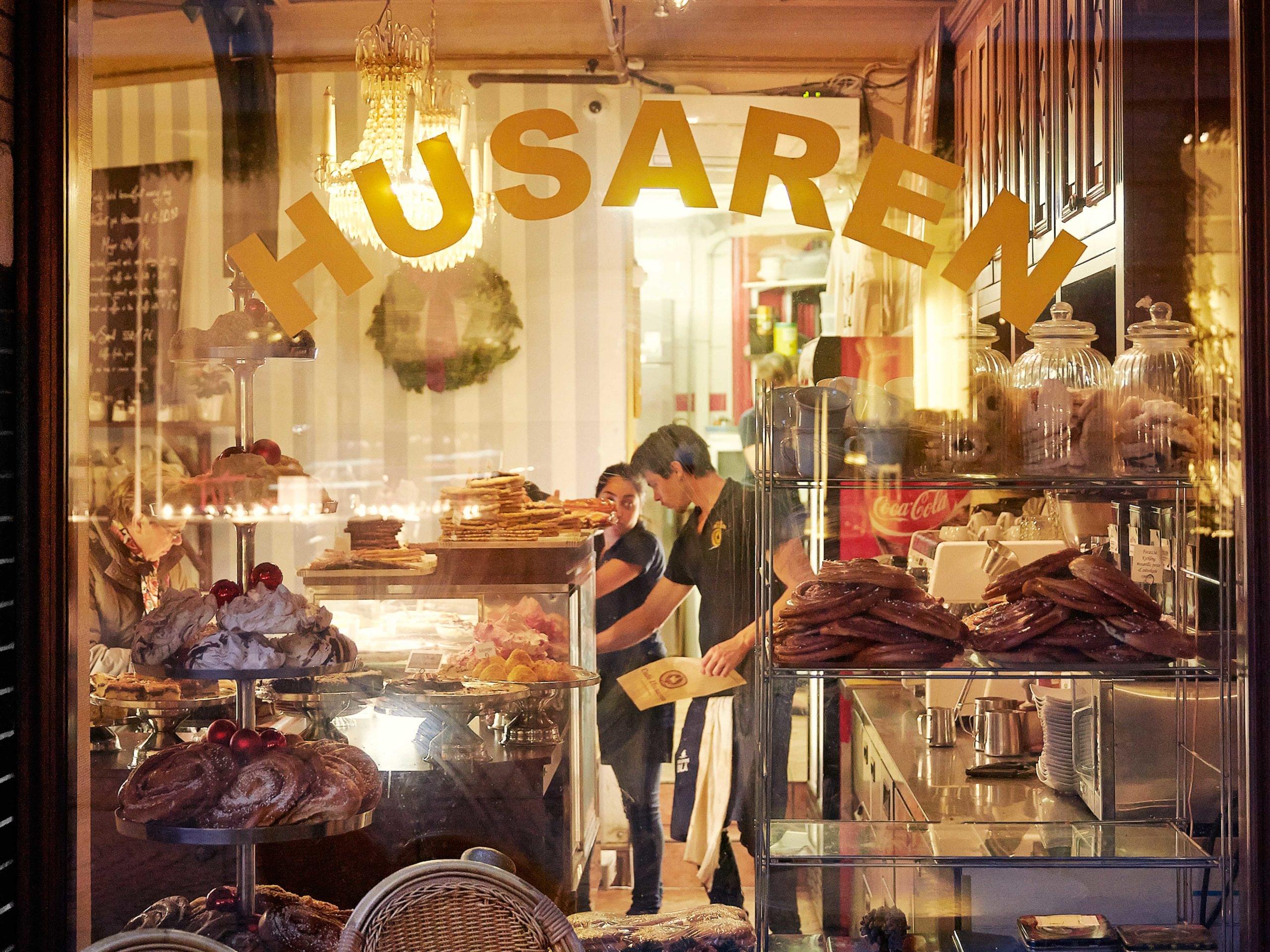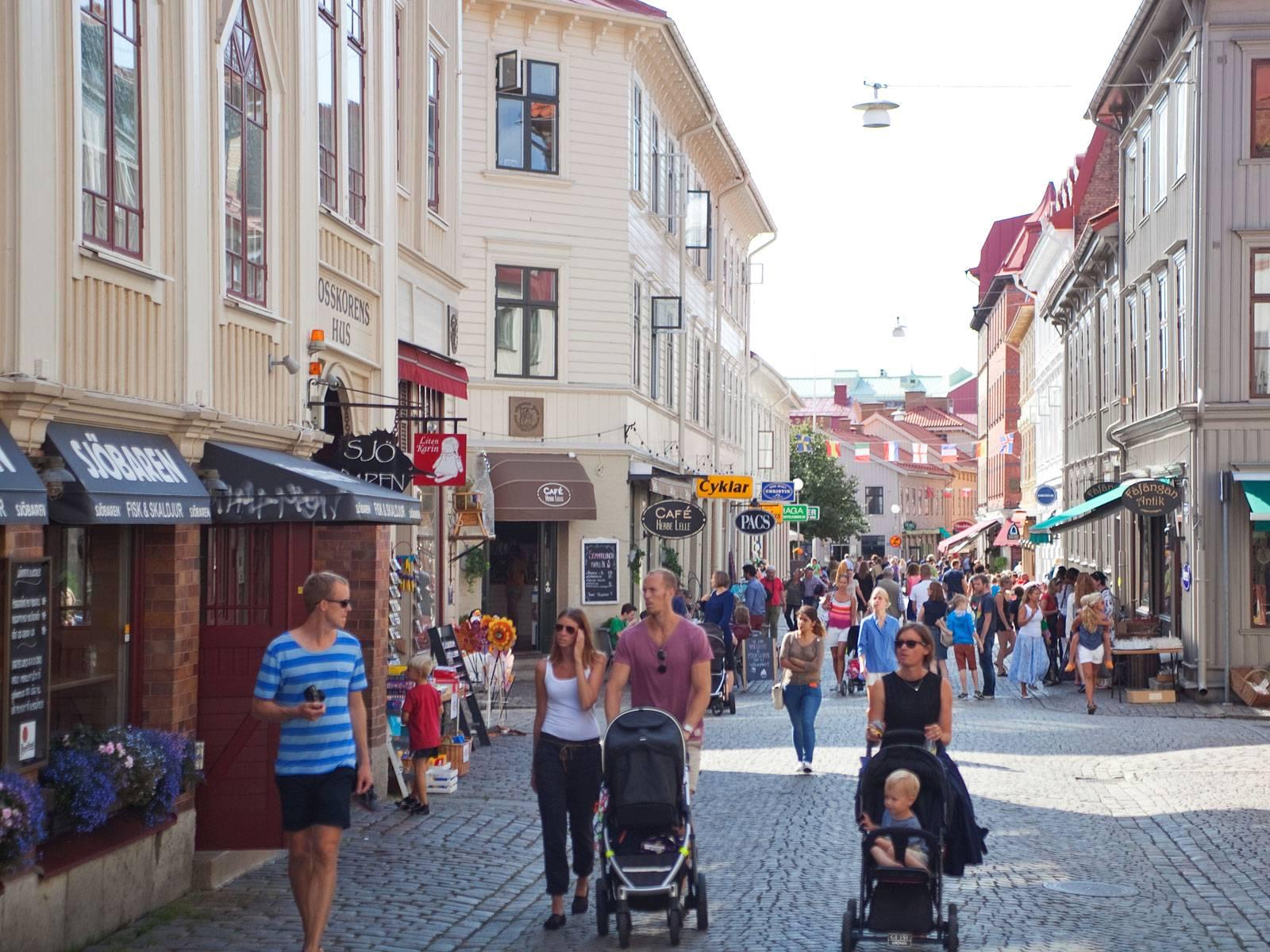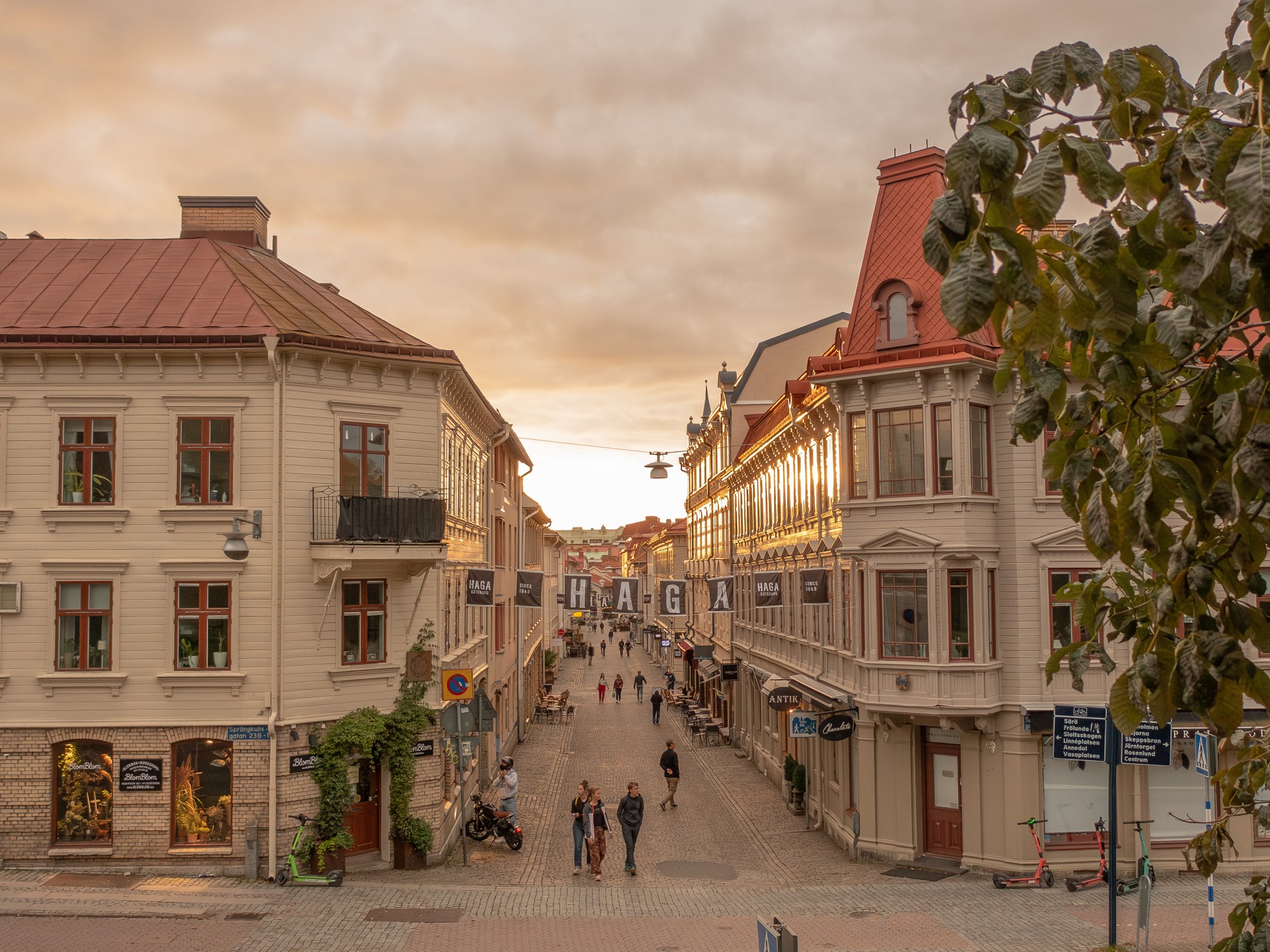Haga is conveniently located within walking distance of the city centre, but if you arrive by tram you can get off at the stops Hagakyrkan or Järntorget. The area is found between Vasa and Linné and the main street Haga Nygata stretches from one end to the other.
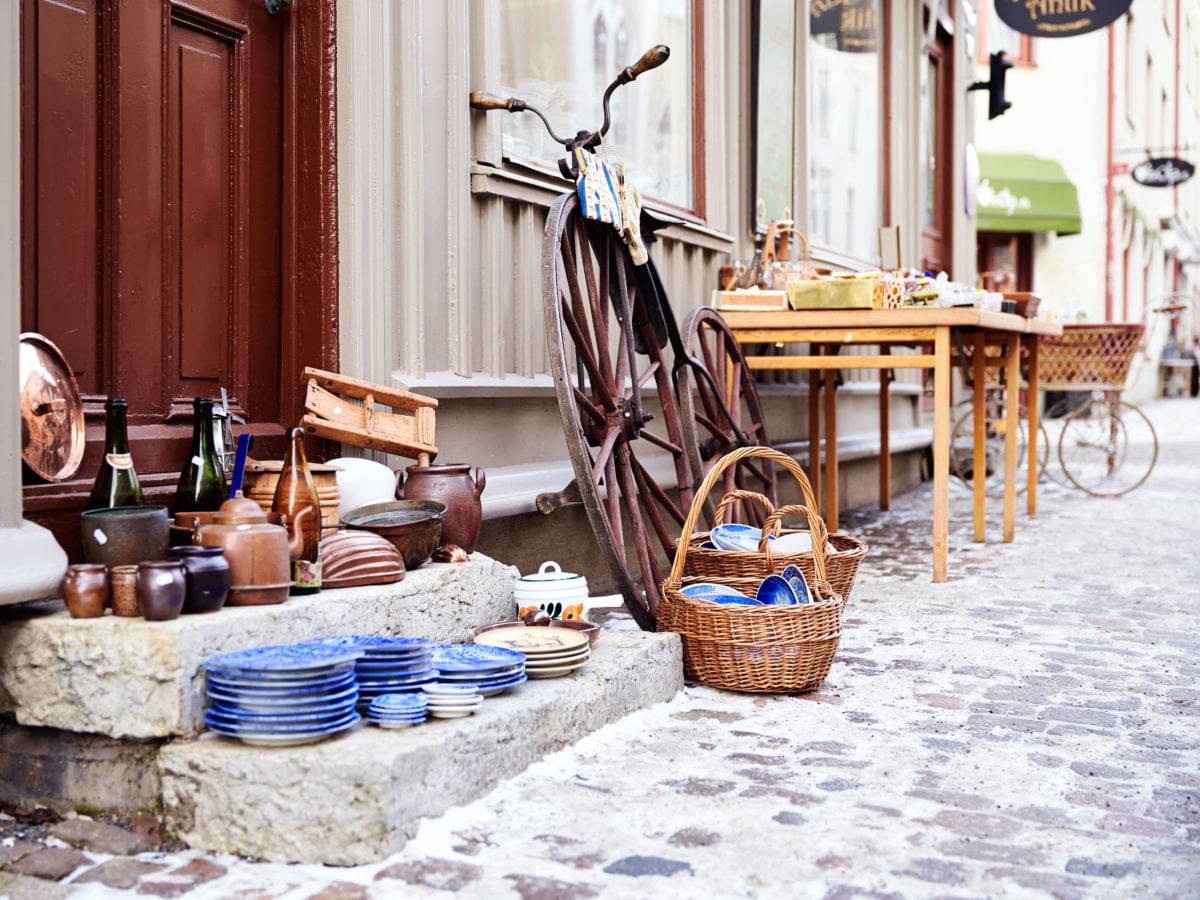
Shopping + fika = match made in heaven
A shopping spree is not complete without a proper coffee break, and in Sweden we call it fika. The Haga neighbourhood is perfect for the occasion. The selection of shops is varied, with everything from a soap shop to an independent toy store and a local marzipan and chocolate maker. You can also find interior decoration, fashion, antiques, tea, spices and olive oil. There truly is something for every taste and most shops are unique and can’t be find elsewhere.
When you feel like a break, the nearest cup of coffee is literally a metre away. One of the most famous pastries in town – Hagabullen – a plate-sized cinnamon bun, is found at Café Husaren at Haga Nygata. But there are plenty of choices and pavement cafés and outdoor terraces line the street in summer. A farmer’s market is found here in spring and autumn, and there is always a popular market in the run-up to Christmas.
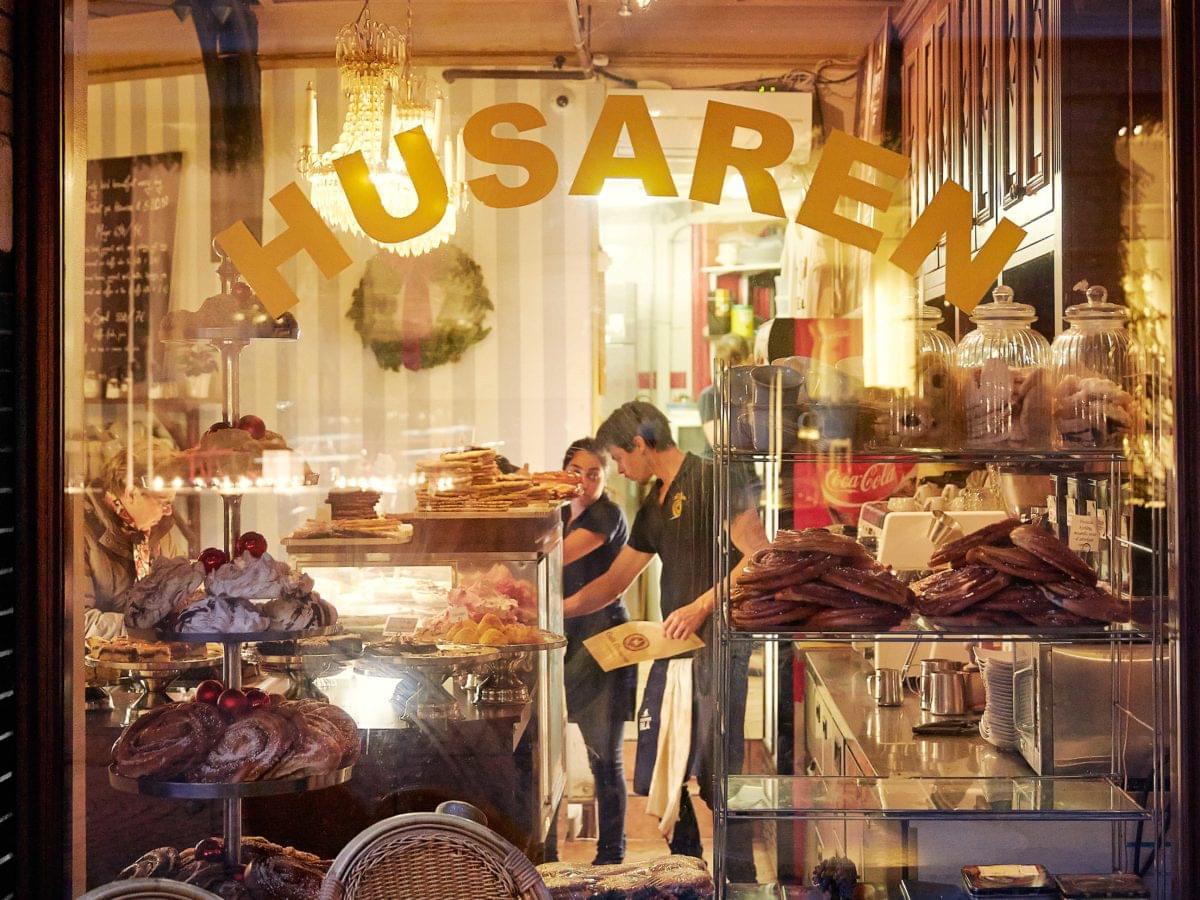
Gothenburg’s first suburb
Nowadays, Haga is located in the middle of the city. But this was not the case when Gothenburg’s first suburb was planned in the middle of the 17th century, after orders from queen Kristina. The name Haga actually refers to the Swedish word hage, which means an enclosed field, giving a hint of the current nature and scenery at the time. If you climb the hill Skansberget, with the fortification Skansen Kronan on top, you get a nice view of the district and a large part of the city.

The neighbourhood has several well-preserved wooden houses built in the typical style called landshövdingehus (translated into county governor’s house). The houses are characterised by having a ground floor in stone and two wooden floors on top. The typical wooden houses were built between 1870 and 1940, as housing for the working class in for example Haga, Majorna, Kungsladugård and Lindholmen. Fire regulations at at the time forbid houses higher than two storeys, but a ground-floor in stone made three-story houses possible despite this.
Haga is today a very popular residential area, but there are no hotels. That’s no big deal, since the distances are really short anyway. Hotels located at Grönsakstorget, Esperantoplatsen and Vasastan are good options if you want to check in nearby.



